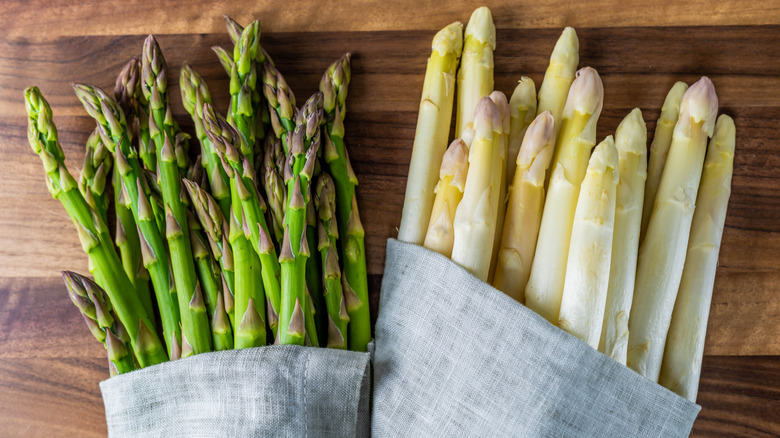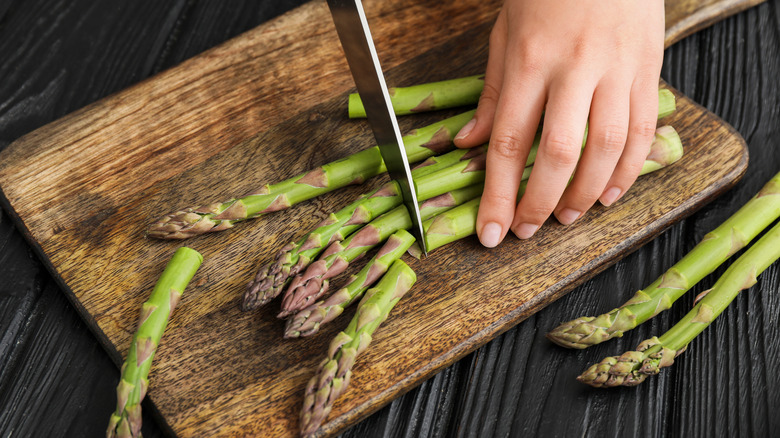The Best Way To Snap Fresh Asparagus At Just The Right Point
Asparagus is an amazingly versatile vegetable to have in your kitchen's arsenal. It's perfect for a summer breakfast of avocado toast and poached egg, grilled with steak in the winter, or as a flavorful soup in the spring. The possibilities are endless. The health benefits of these little spears are numerous as well. Not only low in calories, asparagus is also great for digestion, contains tons of fiber, helps lower blood pressure, and has tons of feel-good vitamins (via Healthline).
Adding asparagus to your diet seems like a no-brainer — it's good for you and goes with almost everything. But no matter what you are cooking, you'll want to separate the tough lower stem of the asparagus from the tender top. The dividing question then becomes, what is the best way to do that? Are you a fan of the old-school bend-it-till-it-snaps ideology, or are you a look-and-cut kind of cook?
Snap vs. cut
If you are somewhat experienced in the kitchen and have worked with asparagus before, you've probably heard of the bend-and-snap approach. This method is where you hold a single stalk by each end and bend it until it "naturally" snaps (via The Spruce Eats). In theory, where the asparagus snaps is where the woody part of the stalk ends and the softer, more edible part of the vegetable begins. This is a common way for most people to learn where to cut asparagus. However, Serious Eats did an experiment, challenging the traditional bend-and-snap method. According to the outlet, the bend-and-snap technique is too variable. A quicker, more consistent way to split the asparagus is by looking at where the vegetable becomes stiffer and woodier. It may even be significantly paler than the rest of the stalk. Then cut along that visual line.
Whether you decide to stick with the bend-and-snap method or adhere to the look-and-cut technique, don't discard those asparagus ends. They can be used to make a delicious soup or sauce.

